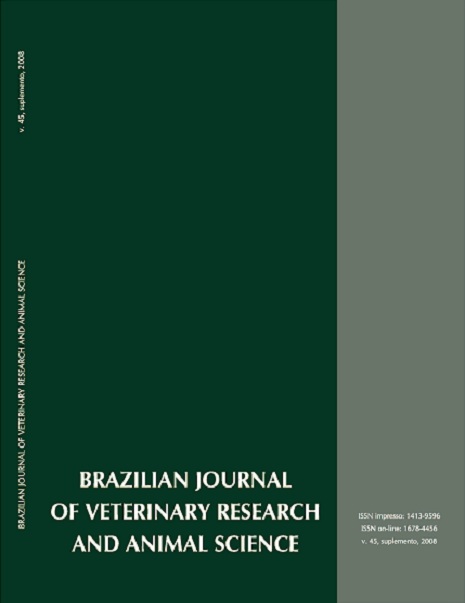Evaluation of bacterin and Lactobacillus plantarum front an experimental infection of Vibrio harveyi in pos-larvae of Litoenaeus vannamei
DOI:
https://doi.org/10.11606/S1413-95962008000700005Keywords:
Marine shrimp, Vibriosis, Probiotic, BacteriaAbstract
This study aimed to verify the effect of probiotics and inactivated cells of bacterias such as Vibrio alginolyticus, Aeromonas salmonicida and Pasteurella multocida in larvae survival of Litopenaeus vannamei, in stress test and experimental infection with Vibrio harveyi. Conic tanks of 30 L, were stocked with 400 post-larvae stage five. Four experimental treatments with triplicates consisted of: 1: commercial feed (control), 2: commercial feed plus bacterin by oral administration in artemia, 3: commercial feed plus bacterin by immersion administration, 4: commercial feed with Lactobacillus plantarum inoculation. Bacterin application was conducted 6h before the infection and stress test, while probiotic administration was for 15 days before challenges. In stress test, post-larvae of treatment 4 (commercial feed supplemented with Lactobacillus plantarum) with reached the highest survival rate (87,86 ± 2,35%) followed by the ones of treatment 3 and 2 (bacterim by immersion and bacterim by oral administration in artemia) with 81,54±1,50% and 80,16 ± 2,15%, respectively, which were superior to the control treatment (72,63 ± 3,34%). Next to V. harveyi challenge, animals from treatment 3 presented the highest survival rate (79,60 ± 7,12%) followed by treatments 4 (69,60 ± 10,43%), 2 (65,60 ± 5,18%) and control (56,4 ± 5,58%). All treatments were different from control. The present results demonstrate the possible use of L. plantarum and bacterin as promoters in survival rates of L. vannamei post-larvae in the stress tests and challenges with Vibrio harveyi.Downloads
Download data is not yet available.
Downloads
Published
2008-12-01
Issue
Section
UNDEFINIED
License
The journal content is authorized under the Creative Commons BY-NC-SA license (summary of the license: https://
How to Cite
1.
Buglione CC, Pedrotti F, Vieira F do N, Seifert WQ, Mouriño JL, Martins ML. Evaluation of bacterin and Lactobacillus plantarum front an experimental infection of Vibrio harveyi in pos-larvae of Litoenaeus vannamei. Braz. J. Vet. Res. Anim. Sci. [Internet]. 2008 Dec. 1 [cited 2024 Apr. 25];45(supl.):40-5. Available from: https://revistas.usp.br/bjvras/article/view/26727





